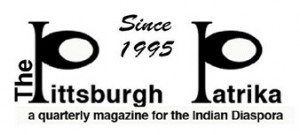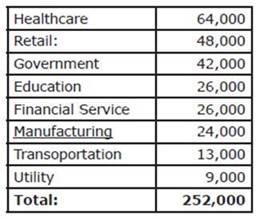By Kollengode S. Venkataraman
Monopoly, or even duopoly for that matter, in any industry, including the healthcare industry, in any region is bad for consumers, citizens and elected officials. Here are examples of what monopoly or near-monopoly did to our own region in the recent past:
The Rise and Fall of the Steel Industry: From the late 19th century to the past mid-20th century, the steel industry was the backbone of our region’s economy. Pittsburgh was known as the “World Capital of Steel Making.†The voluminous tome titled “Making, Shaping and Treating of Steel†published by the Pittsburgh-based U.S. Steel Co. became a bible for metallurgists, just as “Gray’s Anatomy†is for medical students. At its peak, 90,000 people worked here in the steel industry. Nearly 40% of the coal, a critical component in steel making, mined in the entire nation, was produced around the Pittsburgh region. Our football team is still called the Steelers, even decades after the industry imploded.
Naturally, the industry’s tycoons had a big influence not only on the local economy, but also on the elected officials in municipal, county, state, and even federal governments. After all, steel was critical for the defense, transportation, and canned food industries, and for roads and bridges. The steel executives pretty much did whatever they could get away with. The archives of our regional history are chockfull of details on this.
In the 1970s the American steel industry collapsed by the hubris of the industry and its trade union leaders, compounded by a pitiful failure to upgrade steelmaking technology while Japan and Europe invested heavily in making better quality steel at lower cost. The economy of our region went into a horrible tailspin. It took over 20 years — from the mid-1970s to mid-1990s — for our region to readjust and reinvent itself with new avenues in healthcare, higher education and financial services.
But the old glory days of this region were gone forever. Pittsburgh’s population plummeted from 600,000 at its peak to 300,000 today. Allegheny County’s population dropped from 1.63 million in 1960 to around 1.25 million today. Will today’s youngsters believe that only a few decades ago, Pittsburgh was the second city with the largest number of corporate headquarters, next only to New York?
With the steel industry’s rise and fall, the lesson for us is that a diversified economy is necessary to manage with less pain the unavoidable societal transitions when each segment of the economy goes through cycles of growth and decline, ultimately even death.
US Airways Flying Away from PIT: The Pittsburgh International Airport as it stands now was built in the early 1990s for the needs of US Airways, then headquartered here. At the peak of US Airways presence at PIT, we had nonstop flights to over 90 destinations (now only to 40 destinations); PIT at one point had over 600 daily departures (including to cities in Europe); US Airways accounted for over 75% of the flights. Now PIT has around 150 departures, with US Airways accounting for only over 30% of the flights. US Airways filed for bankruptcy twice and eventually shut down its hub at PIT, moving it to Philadelphia. At the peak, US Airways had over 12,000 jobs here; now it is more like 1,200.
In the heydays of US Airways’ presence at PIT, its executives had disproportionate influence not only on the airport administration, but also on our elected officials. US Airways officials never hesitated to use this for getting financial concessions, dangling the threat of moving the hub out of PIT, which they eventually did in the mid-2000s.
Granted, even in the heydays, PIT was mainly a transit airport for US Airways’ passengers for making connections to their final destinations. It took a long time for our region to realign itself to the loss of tens of thousands of air travel-related jobs as a US Airways hub. The region never really recovered from it.
This change was gut-wrenching to the airport authorities, elected officials, and to our entire region as we were transitioning from the Smoky Steel City image. Our elected officials and airport authorities are struggling to get more air carriers to PIT. It will be an uphill task.
So, we are not only intellectually, but also viscerally aware of what the choke hold of monopoly or near-monopoly does to a region. Today, as shown in the table below, the biggest employers in this region are the healthcare industry, retail, governments, higher education, and financial services. In healthcare, UPMC dominates. The University of Pittsburgh and CMU take all the limelight in education.
If you take employers with more than 2000 people on their payroll in our region today, the number of jobs (rounded off to the nearest ‘000) in different segments are as shown in the adjacent table. Source for the data: http://tinyurl.com/SW-Penna-Jobs-SnapShot Â
Large-scale manufacturing today accounts for only less than 10% of the workforce among the different segments. Of the 64,000 healthcare jobs, UPMC accounts for 43,000; University of Pittsburgh has 12,500 of the 26,000 education jobs; and 21,000 of the 48,000 retail jobs are in Giant Eagle and Walmart.
The arrogance of the officials of local monopolies and near-monopolies to flex their muscle to punish those who differ from them and muzzle their voices is so blatant that it is laughable simply for their petulance and pettiness. The fine example is UPMC, a non-profit organization with $11 billion in revenues and $11 billion in assets, not allowing the gift shops in its hospitals to sell The Pittsburgh Post-Gazette, the city’s ONLY daily. They cite “fairness issues” in the newspaper’s coverage of the very public fight between Highmark and UPMC for the lucrative healthcare industry dollars.
Steve Twedt, the Post-Gazette reporter writes, “Twice in recent years, UPMC executives canceled the health giant’s advertising in the Post-Gazette, citing dissatisfaction with the way UPMC was covered in the news pages and how it was portrayed in editorials and editorial cartoons.
Well, the purpose of cartoons is to convey messages using humor, sarcasm, irony, paradox, even ridicule, often all at the same time. If UPMC officials were bitten by the cartoons, probably there was a grain of truth in them. Maybe several grains of truth.
UPMC’s executives enjoying all the financial benefits of its non-profit status did not like the editorials/cartoons. So, they did what any monopoly business or a totalitarian regime would do: they stopped all ads in the Post-Gazette with the intention of punishing the paper. Collaterally, they also made job seekers with limited resources suffer. And then UPMC went one step even lower. It stopped its hospital gift shops from selling Pittsburgh Post-Gazette. This very cheap shot meant a couple of hundred less copies sold for the Post-Gazette, whose weekday print version has a circulation of 180,000. No big deal for the paper. In campaigns costing hundreds of thousands of dollars spent on print and audiovisual media, both UPMC and Highmark try to mould public opinion in their favor. Like political campaigns, each hyped its plus points and glossed over its negatives. The Post-Gazette, being the major daily in the town, covered the news item giving space for both sides. It could not remain without taking a stand editorially on the issue since the fight between the two was affecting the general public, and helpless healthcare consumers.
The region’s 2-million healthcare consumers, also known as sick patients, are now in the clutches of UPMC and Highmark for their critical healthcare needs, with the behemoth UPMC trying to devour Highmark to become the only game in town. No matter who wins, this fight is not in the interest of healthcare consumers, also known as patients who are sick.
UPMC’s domination in the local healthcare industry is also not good for the long-term economic vitality of our region. If you doubt this, see what the steel industry did to the Tri-State area and what US Airways did to our airport.


